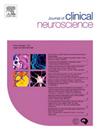Timely access to neurosurgical public care in Peru: A geospatial analysis
IF 1.9
4区 医学
Q3 CLINICAL NEUROLOGY
引用次数: 0
Abstract
Introduction
Understanding geographic access to neurosurgical care is key to ensuring timely treatment, particularly in countries with challenging topography like Peru. This investigation sought to estimate Peru’s population distribution within critical time intervals and proximity to the nearest neurosurgical facility in the Ministry of Health network.
Methods
A geospatial analysis was conducted to assess the distribution of Peru’s population across its 25 regions within six travel time areas (1 h, 2 h, 4 h, 6 h, 1 day, and 5 days) to the nearest neurosurgical facility.
Results
Twenty-five facilities were identified across Peru, of which 92 % pertained to tertiary or higher-level facilities and were included in the analysis. Peru’s population was estimated at 32,625,937 people. Lima concentrates 52.17 % of neurosurgical facilities. Nearly 13,819,251 people (42.36 %) could lack neurosurgical access within 4 h of travel. About 302,733 people (31.3 %) living in the region of Loreto could access neurosurgical treatment in up to 5 days of travel.
Conclusion
Geographic access to neurosurgical care in Peru is heterogeneous. Major hospital settings remain centralized in the regions of Lima and Callao. Virtually 42.36 % of the Peruvian population could not access timely neurosurgical care within 4 h of travel. Notably, roughly one-third of the population in the Amazon area of Loreto could access a neurosurgical setting in up to 5 days of travel. These findings can incentivize further assessment of underserved regions, prioritization of infrastructure development, and synergistic policy interventions from governmental and non-governmental organizations.
求助全文
约1分钟内获得全文
求助全文
来源期刊

Journal of Clinical Neuroscience
医学-临床神经学
CiteScore
4.50
自引率
0.00%
发文量
402
审稿时长
40 days
期刊介绍:
This International journal, Journal of Clinical Neuroscience, publishes articles on clinical neurosurgery and neurology and the related neurosciences such as neuro-pathology, neuro-radiology, neuro-ophthalmology and neuro-physiology.
The journal has a broad International perspective, and emphasises the advances occurring in Asia, the Pacific Rim region, Europe and North America. The Journal acts as a focus for publication of major clinical and laboratory research, as well as publishing solicited manuscripts on specific subjects from experts, case reports and other information of interest to clinicians working in the clinical neurosciences.
 求助内容:
求助内容: 应助结果提醒方式:
应助结果提醒方式:


